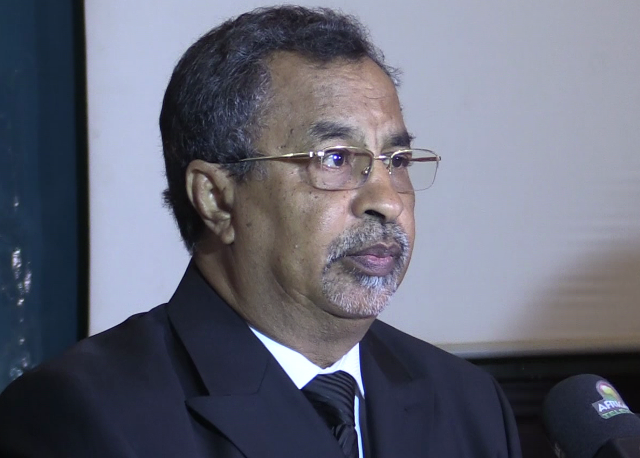Having assumed office six weeks ago, the UN Under-Secretary-General for Peacekeeping Operations Jean-Pierre Lacroix made his first visit to Africa, notably Mali, to gather the views of the Malian interlocutors, to examine developments in the political and security situation. Previously, he traveled to Algeria and Niger. In Bamako, he met with the press on Wednesday May 17, 2017, accompanied by Mahamat Saleh Annadif, Special Representative of the UN Secretary-General in Mali.
This visit is anything but trivial, as it takes place within weeks of the forthcoming review of the renewal of the mandate of MINUSMA (UN Multidimensional Integrated Stabilization Mission in Mali). A deadline for reporting on the situation in Mali which according to Jean-Pierre Lacroix, is characterized by « the persistence of security challenges », especially in the center of the country, and the implementation of the Peace and Reconciliation Agreement.
Deployment of a UN force to the Center
While welcoming a « momentum » in Mali, the Secretary-General for Peacekeeping Operations pointed to the lack of capacity of MINUSMA and announced the arrival of reinforcements, the forthcoming deployment in the central Mali of a reaction force coming from Senegal. There will also be an addition of equipment and technological means. The Center (Mopti, Ségou, Koulikoro) is increasingly concerned by the deterioration of security conditions.
At the regional level, he welcomed the G5 Sahel whose forces are destined to fight terrorists. For him, this initiative is « an encouraging step forward » that reflects the « willingness of countries to take on the challenges of the Sahel ». Is there a risk of overlap between this G5 Sahel force and the force that MINUSMA plans to deploy in the Center? No, he replies, indicating that it will be enough to « properly organize the articulation between the two forces. »
« This synergy will have to integrate the Malian armed forces. There is complementarity. The differences in the mandates and responsibilities are very clear », he adds.

Threat to the Agreement
Next June 15 marks the second anniversary of the signing of the Peace and Reconciliation Agreement whose implementation is very slow according to the most shared opinion. « It’s long. There is slowness and delays. There is an expectation of the Malians and partners who have committed resources to this process », explains s Jean-Pierre Lacroix, calling on the signatories to make more efforts. According to Mahamat Saleh Annadif, Special Representative of the UN Secretary-General in Mali, there was no blockade until July 22, 2016, when the Coalition of Azawad Movement (CMA) and the Platform began to fight each other in Kidal. On January 18, 2017, there was also the tragedy in Gao, with the attack on the camp of the Operational Coordination Mechanism (MOC), which left more than 50 dead. This was a hard blow to mixed patrols. These events, according to Mr. Annadif, are largely responsible for the delay in the implementation of the Agreement.
Another blocking factor, he points out, is the MOC in Kidal, which is still not operational even though it had to secure the setting up of the interim authorities. « The CMA has not released Camp No. 1, which was to host the MOC », said the head of the UN mission. « It is a decision that has been made, it must respect it ». But the biggest threat to the agreement he said, remains the hostility between the CMA and the Platform, which are not observing a ceasefire. The mistrust between these movements makes the cantonment sites empty while they are ready and available.
Boubacar SangaréTranslated by Mahaitou Ibrahim Maiga

